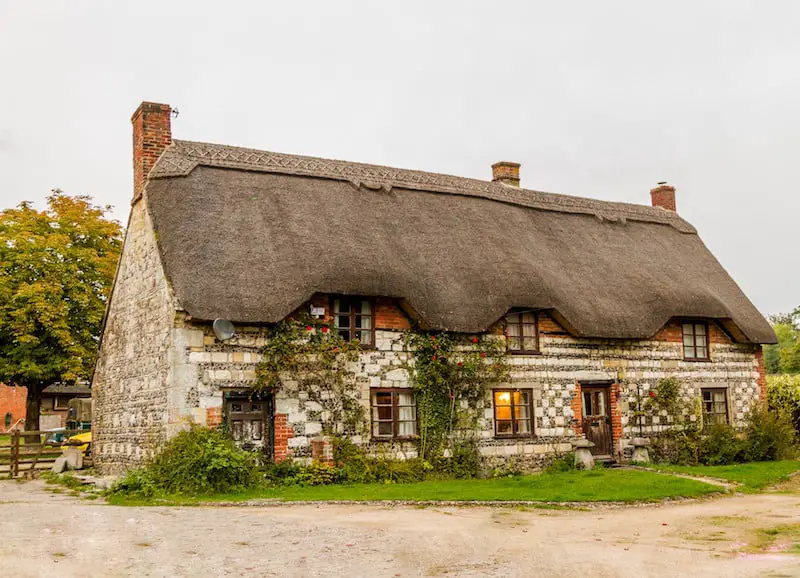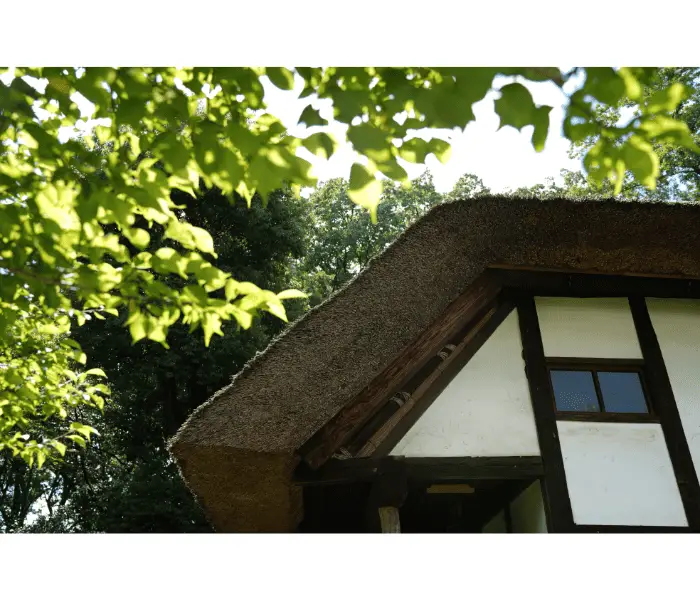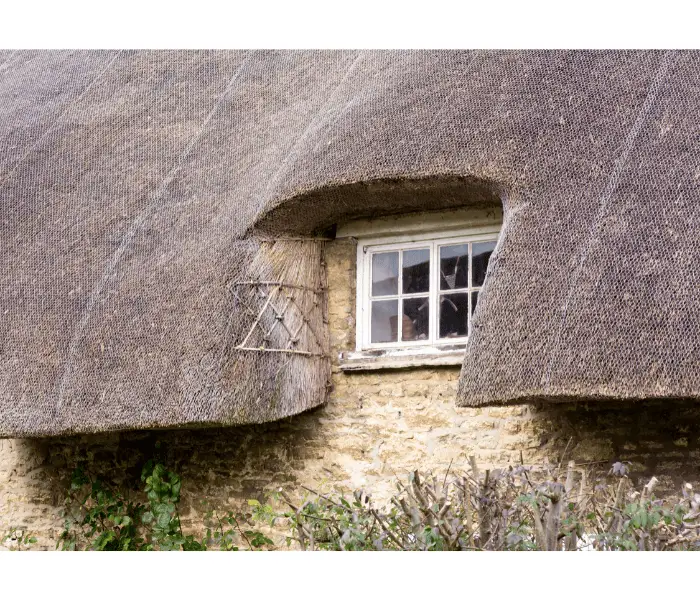Considering thatched roofs look pretty bulky compared to tiles, it’s fair to ask. In this article, we’ll answer that question and look at the science behind why this is the case.
Of course, we won’t be able to provide exact weights, but we’ll do our best! But are thatched roofs heavy? Thatched roofs aren’t heavy compared to other roofing materials, like tile. After all, a thatched roof is made from straw or reeds, which are thin and hollow. A thatched roof can be up to 50% lighter than an equivalent sized roof made from tiles.
Although a thatched roof is made from tightly woven organic material, a surprising amount of the roof is actually air.
As mentioned, straw and reed (the two most common thatching materials) are essentially hollow tubes. It means they’re surprisingly bulky, but also surprisingly light.
Roof tiles, on the other hand, are dense and heavy. Whether you’re using slate or terracotta tiles, both are much heavier than something like straw.
The result is that a thatched roof requires less support, both in the roof and the building itself.

What is Under a Thatched Roof?
This’ll come as no surprise to anyone who’s seen inside a roof. A thatched roof is still supported by timbers in the same way as a tiled roof.
After all, it still needs something to bear the weight of the thatch, even if it’s less weight than on a roof made of tiles.
In traditional thatched buildings, the support material of choice was oak. This is because oak is very strong and, once cured, can last for hundreds of years.
As with any other roof, it consists of trusses. These are triangular shapes of wood with webbing (support posts) in the middle.
More modern houses opt for different types of wood, as oak is comparatively expensive. Coniferous woods are more common now, which include pine, spruce, or fir. The wood is kiln-dried to make it harder and longer-lasting.
Despite thatch being a lighter roofing material, construction is pretty much always the same for what’s underneath.
You might find that tiled roofs have plywood between the trusses and the roofing material, along with a layer of plastic sheeting for better water resistance.
A thatched roof, however, generally won’t have plastic underneath. This is because thatch is natural water resistant due to the way it’s built.
The weave and top layer (ridge) cause water to run off rather than soak in. That said, you might find modern thatched builds (or older homes that have had the roof completely replaced) follow completely modern roofing techniques.

How Much Does a Thatched Roof Weigh?
There are quite a few variables that go into calculating the weight of a thatched roof.
Generally, it’s not something you’ll have to worry about if you’re building or replacing one, as a qualified thatcher will know all this information before starting.
But if you’re just curious, here are the factors that influence the weight of a thatched roof.

Material
There’s some difference in the weight of thatching materials used, although it’s not massive. Generally, reeds will be heavier than straw because the material is thicker.
Also, reed roofs are typically laid thicker than straw roofs, meaning they’ll be heavier overall.
Pitch
The roof’s pitch is the angle of its slope. This is dictated by a few factors, including the roof tresses and the thickness of the roofing material.
Thinner roofs are usually steeper and, despite having less material, will usually last longer as a result.
Fixings
The fixings are what hold the thatch material in place. On more traditional builds, these are made from hazel, which isn’t that heavy.
However, some modern builds will use steel fixings or wires, which will be heavier overall. There might also be nails and twine involved in keeping the thatch in place.
So, putting all this together, how much does a thatched roof weigh?
The average weight for a thatched roof is 34kg per metre squared. However, depending on the thickness and type of material, it can be as heavy as 75kg per metre squared.
Even at the heaviest end, it’s still lighter than a tile roof, which is around 78kg per metre squared.
Final Thoughts on Thatched Roof Weights
So, there you have it, everything you might want to know about the weight of thatched roofs.
On the surface, it seems surprising that they’re lighter than tiled roofs, but once you think about the materials used, it makes perfect sense.



